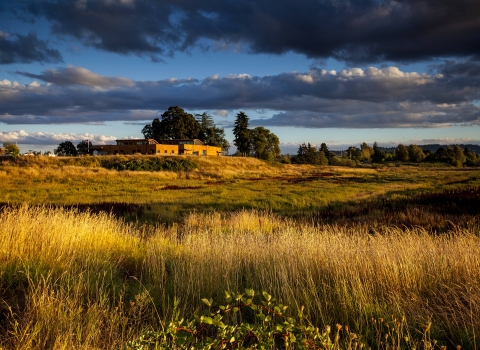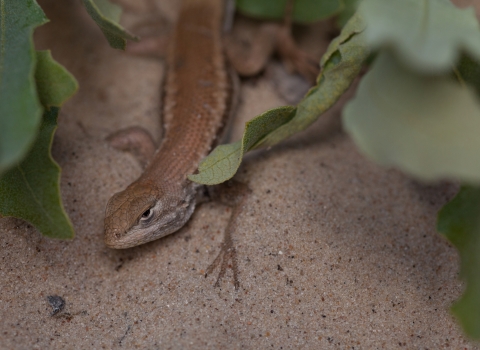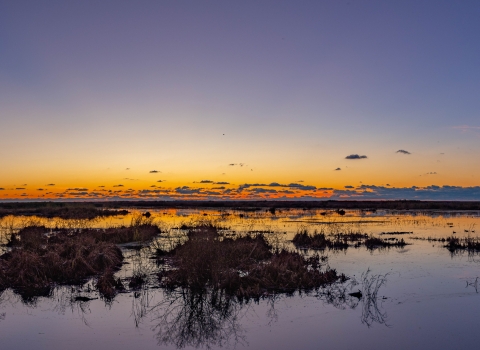The U.S. Fish and Wildlife Service today announced its final decision to expand the acquisition boundary of the Okefenokee National Wildlife Refuge by approximately 22,000 acres. The new acquisition boundary includes lands currently held by a variety of owners within a 1-mile fuel reduction zone adjacent to the refuge. Potential conservation actions on the lands within the boundary expansion could strengthen protection of the hydrological integrity of the swamp, provide habitat for the gopher tortoise, mitigate impacts of wildfires, and provide opportunities for longleaf pine restoration to benefit the red-cockaded woodpecker.
The expanded boundary allows the Service to potentially offer priority public uses such as hunting, fishing, wildlife watching, and education to the more than 400,000 annual visitors to the refuge, thereby driving a growing ecotourism economy within the community.
Today’s decision follows the Department’s recent announcement that Okefenokee National Wildlife Refuge will be nominated to the UNESCO World Heritage List. If designated, the refuge would join the list recognizing 1,223 cultural and natural sites of universal importance, such as the Grand Canyon in Arizona, the Taj Mahal in India, the Great Wall in China, and the Galápagos Islands in Ecuador.
During a 55-day public scoping period, which included an in-person public meeting and a virtual meeting, the public submitted approximately 30,000 comments including individuals from 36 countries and all 50 states, including Washington D.C., Virgin Islands, and Puerto Rico. Comments, which were generally supportive of the proposal, represented the views of approximately 40 non-governmental organizations, one Tribal Nation, seven government officials, and the general public.
Minor boundary modifications were made to correct mapping errors and to ensure the proposed area was acceptable to all landowners in the area. The minor boundary expansion enables the Service to work with willing landowners to explore voluntary conservation actions, including potential acquisition or conservation easements, that would further protect the refuge’s globally significant freshwater wetland system and wildlife habitat.
“The response received during the public comment period is a testament to just how special Okefenokee is, not just to our local community, but to people all over the nation and around the world,” said Michael Lusk, refuge manager at Okefenokee National Wildlife Refuge. “We appreciate the commitment to conserving this landscape. This minor expansion will help further conservation efforts for the swamp along with the threatened and endangered species that inhabit it.”
The Okefenokee National Wildlife Refuge, located in Folkston, Georgia, is the headwaters of the Suwannee and St. Mary’s rivers. The refuge provides habitat for fish and wildlife, including threatened and endangered species. It is world renowned for its amphibian populations, which are bio-indicators of global health. The refuge has 353,981 acres of National Wilderness Area within the refuge boundaries. Additionally, it is a Wetland of International Importance
(RAMSAR Convention – 1971) due to the Okefenokee Swamp’s global significance. The refuge receives approximately 400,000 annual visits, with 10 percent of those visits from international guests from more than 46 different countries. The Okefenokee National Wildlife Refuge also helps support an average of $39.2 million on recreation spent annually, which includes supporting 826 jobs associated with that recreation and $17.5 million in job-related income.
For more information on the expansion, go to https://www.fws.gov/refuge/okefenokee.




